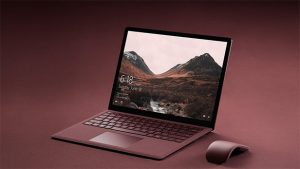Surface Laptop vs Chromebook Pixel: All the key specs compared

Surface Laptop vs Chromebook Pixel: What’s the difference between Microsoft’s affordable new Surface Laptop and Google’s Chromebook Pixel? We reveal all.
Microsoft has reignited the cheap laptop wars, unveiling the latest addition to its Surface lineup in the form of the all-new Surface Laptop.
But where previous Surface devices like the Surface Book and Surface Pro 4 have been aimed squarely at professionals, the Surface Laptop targets a new user base – students.
That positions it as a rival to Google’s Chromebook range, which includes the Mountain View-based firm’s own Chromebook Pixel. (Note that we’ll be referencing the more recent 2015 Chromebook Pixel in this article).
How do the two compare? Let’s take a look.
Related: Best laptops

The starting point for our Surface Laptop vs Chromebook Pixel comparison has to be software, as Microsoft’s new Windows 10S platform took pride of place at its May launch event.
It’s similar to Google’s Chrome OS in that it gives you access to some of the most popular Office applications – including Word, Excel and Powerpoint – whilst restricting non-approved app installs. For its part, Chrome OS lets you use a range of Google software, including Docs (word processing), Sheets (spreadsheets) and Slides (presentations).
So far, so much the same – but things get a bit more interesting when it comes to the specs, hardware and design of the two products.
Microsoft claims that the Surface Laptop enjoys battery life of up to 14.5 hours, while the Chromebook Pixel ‘only’ lasts for 12 hours on a single charge, according to Google.
Elsewhere, both the Pixel and Surface Laptop will come available in a range of Intel Core i3, Core i5 and Core i7 configurations – though the Surface Laptop will feature chipsets based on the latest Kaby Lake architecture and is almost certain to offer superior performance as a result.
The Pixel, however, comes up trumps on paper for display quality, boasting a 2560 x 1700 pixel resoluton on its 12.85-inch touchscreen compared to the Surface’s 1080p 13.5-inch display.
It offers more connectivity options, too, coming with two USB-C ports, a pair of USB 3.0 inputs, and an SD card reader. The Surface Laptop offers a single traditional USB port and SD card slot, but some will feel the Microsoft device’s svelte form factor (it’s thinner than a MacBook Air) compensates for the lack of ports.
And while many will see it as far from adequate in this day and age, the Surface Laptop also comes up trumps for on-board storage, with a ‘standard’ model packing 128GB of SSD space, compared to the Chromebook Pixel’s maxium 64GB capacity.
That’s more or less all we know for now, but stay tuned as additional Surface Laptop specs are still to be confirmed. We’ll be sure to update this comparison with all the latest details as they become available, and our expert first impressions once we’ve had a go on the device.
Until then, the final thing you need to know is that while the Chromebook Pixel is currently available, it’s now a couple of years out-of-date, with the most recent refresh coming in 2015.
The Surface Laptop, on the other hand, is now available to pre-order in the US ahead of a June 15 release date. It’ll cost $999/~£775 for a Core i5 version, while a 2015 Chromebook Pixel currently goes for around £500.
We’ll have to wait to test the Surface Laptop in full, but chances are, it’ll be worth both the wait and the extra pocket money.
Related: Best Intel processor
Shell on a new Surface Laptop or save with an older Chromebook Pixel? Share your thoughts in the comments below.

